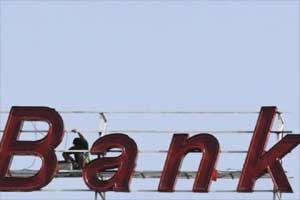State-controlled banks in India have stressed assets including non-performing assets (NPAs) and restructured loans of over R7 lakh crore, though not all may be bad debts. NPAs rose from 5.20% to 6.03% from March to June 2015.
Why are there such huge poor assets with state-owned banks; even though some banks like Kotak Mahindra have more assets than 10 state-owned banks together? State-owned banks have boards that are packed with nominees of ministers and bureaucrats. Banks enjoy limited independence in decision-making, especially in lending and collecting from important borrowers. Governments have given generous debt-equity ratios, ranging from 70-80%, with the equity many times being siphoned off by promoters at the construction stage instead. Numerous government approvals were delayed and projects overshot time-frames and amassed huge over-expenditures. For example, over 25,000MW gas-based power capacity project worth perhaps R1.5 lakh crore is lying stranded. The money belongs to the state-owned banks. Then there is crony lending to favoured parties without consideration of risks.
Indira Gandhi nationalised banks and insurance in 1969, ostensibly to extend banking to rural areas and households as well as to enlarge the credit recipients to agriculturists, medium and small industries, and small borrowers. It was to prevent misuse of public savings by the bank owners and to ensure that bank credit was available all over India. In the event, little of this happened. Rural branches remained few; there was wide extension of banking to rural households only in 2015, thanks to BJP’s Jan-Dhan Yojana. Banks have accumulated huge bad debts, NPAs, but have restructured some of them and are waiting for them to perform.
Nationalisation of banks and running them by the state has been a failure. It has restricted the growth of credit and not deepened the availability of funds. It has led to large borrowers becoming nonchalant in repayment of borrowings because of their connections in the government. The average capitalisation at state-controlled banks is even worse when adjusted against a significant stressed asset stock and low-to-moderate provision cover. Rating agencies have dire assessments of Indian state-owned banking, which is the dominant element.
The capital requirements of state-owned banks are around R2 lakh crore. The government has announced capital infusion of R70,000 crore over the next four years. It has provided R25,000 crore in this Budget. The finance minister promises to give more, but does not say where he will get the funds from, given that the deficit is already at the targeted level.
Fitch has said that “weak capitalisation and challenges from poor asset quality are to remain significant issues for India’s state banks through the medium term.” The finance minister has said that banks will raise R1.1 lakh crore by tapping markets. This may not be sufficient due to weak asset quality and persistently low equity valuations. Markets may not support this equity raising.
In the Budget, the finance minister announced that banks will be consolidated, top management will be reviewed and new people brought in. Changes in the Sarfaesi Act are proposed to help asset reconstruction companies to do better, but the details have to be worked out. “The first and immediate agenda is to strengthen the banks. We will strengthen them by recapitalising … and thereafter we are willing to look at consolidation among subsidiaries, consolidation of subsidiaries with the principal bank, consolidation of a weak bank with a strong bank,” the finance minister said. But the government will remain the dominant shareholder. Over the long run, he said, the government will bring down its stake in public sector banks to 52%.
These steps will not revive state-run banks and expand and deepen their ability to service an economy that must expand. What is needed is eliminating any government interaction with banks in their operations. That must be left to the regulator, the Reserve Bank of India (RBI). There must be a set time-frame to bring down government shareholding so that boards can be autonomous and govern the banks. Privatising some would be a good move, subject, of course, to tight regulation. Ensuring that borrowers service and repay loans must be a top priority and should be enforced. This may mean that some borrowers may have to be sold to others. Recruitment to banks must be open and not closed to ‘insiders’. Rewards and penalties for performance must be laid down and implemented. Banks should not be made to do ‘priority sector lending’—a major cause of bad loans. If it has to be done, the government must give funds to banks for the purpose. Perhaps a separate banking regulator as part of RBI (if possible, a separate Constitutional authority) might strengthen the regulation for all banks.
What is clear is that the finance minister has barely touched the surface of the problems and their solutions. It only reinforces the view that Narendra Modi government’s economic policies are those of the Congress and they cannot think differently.
The author is former director general, NCAER, and was the first chairman of the CERC


